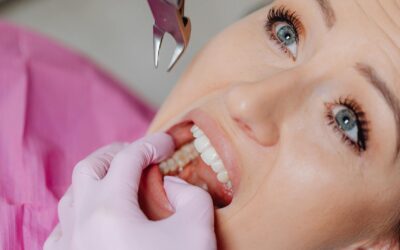Wondering how much you’ll pay out of pocket for a dental filling? If you’re one of the many Americans without dental insurance, this guide will walk you through everything you need to know about the tooth filling cost without insurance—including types of fillings, real average costs, and practical money-saving strategies.
Dental expenses are rising, and fillings are one of the most common procedures performed in the U.S. They’re vital for treating cavities and preventing more serious issues, yet pricing is often unclear. Let’s demystify it all.
- What Is a Dental Filling?
- How Much Does a Tooth Filling Cost Without Insurance?
- National Average Cost of Tooth Filling Without Insurance
- Location Matters: City vs. Rural Cost
- What Affects the Cost?
- Are Fillings Covered Without Insurance?
- Smart Ways to Save on Dental Fillings
- Remember: Small Fillings = Big Savings
- FAQ: Common Questions About Tooth Filling Cost Without Insurance
- Real User Story: Cost Comparison
- Final Thoughts: Is It Worth Paying Without Insurance?
🦷 What Is a Dental Filling?
Dental fillings are restorative procedures used to treat cavities or minor tooth fractures. When decay eats away at enamel, your dentist removes the decayed material and “fills” the space with a durable material to restore function and appearance.
Common materials include:
- Amalgam (silver)
- Composite resin (tooth-colored)
- Gold
- Porcelain (ceramic)
Each material has pros and cons, and the one you choose will affect how much you pay—especially without dental insurance.
Quick Fact: According to the American Dental Association (ADA), over 90% of adults aged 20 to 64 have had at least one cavity. Dental fillings remain the most frequent solution.
💸 How Much Does a Tooth Filling Cost Without Insurance?
The cost of a dental filling can vary greatly depending on the material used, the complexity of the cavity, and where you live. Here’s a detailed breakdown:
1. Amalgam (Silver) Fillings
- Cost Range: $50 – $150 per filling
- Pros: Durable, affordable, long-lasting (10–15 years)
- Cons: Noticeable metallic look, not ideal for visible teeth
2. Composite Resin (Tooth-Colored) Fillings
- Cost Range: $90 – $450 per filling
- Pros: Natural appearance, great for front teeth, bonds to tooth
- Cons: Shorter lifespan than amalgam (7–10 years), more expensive
3. Gold Fillings (Inlays/Onlays)
- Cost Range: $250 – $4,500+
- Pros: Extremely strong and durable, can last 20+ years
- Cons: High cost, visible appearance, more complex placement
4. Porcelain (Ceramic) Fillings
- Cost Range: $300 – $4,500+
- Pros: Aesthetic, strong, stain-resistant
- Cons: More brittle than gold, more expensive
Tip: Ask your dentist if the cavity is small enough to qualify for a lower-cost resin or silver option.
📊 National Average Cost of Tooth Filling Without Insurance
Here are some average figures gathered from dental research groups, clinics, and ADA recommendations:
| Filling Type | National Average Price (Uninsured) |
|---|---|
| Amalgam (1 surface) | $125 – $160 |
| Composite (1 surface) | $170 – $250 |
| Composite (2+ surfaces) | $250 – $450+ |
| Gold/Porcelain Inlay | $650 – $2,500+ |
These costs are for a single tooth. Prices can double or triple if you need multi-surface fillings or root canal treatment before filling placement.
📍 Location Matters: City vs. Rural Cost
The cost of dental work without insurance depends heavily on where you live.
- Urban areas like New York City, Los Angeles, or Chicago may charge 20–40% more due to higher overhead.
- Rural areas or suburban clinics may offer more budget-friendly options, especially with general dentists rather than cosmetic-focused ones.
Here’s a quick comparison:
| Location | Composite Filling (Average) |
|---|---|
| Los Angeles, CA | $300 – $450 |
| Dallas, TX | $180 – $250 |
| Kansas City, MO | $140 – $200 |
| Charlotte, NC | $170 – $240 |
🛠️ What Affects the Cost?
Several key factors impact how much you’ll pay:
- Type of Material Used: Composite and porcelain cost more than amalgam.
- Cavity Size and Complexity: Larger, deeper, or multi-surface cavities cost more.
- Location of the Tooth: Molars are harder to access and often cost more to fill.
- Dentist’s Experience and Technology: More advanced clinics may charge higher fees.
- Additional Services: X-rays, anesthesia, and exams may be added to your bill.
- Urgency or Emergency Visit: Same-day or emergency care can increase the total cost.
🧾 Are Fillings Covered Without Insurance?
No, unless you have a dental discount plan or are visiting a dental school or charitable clinic, you are responsible for 100% of the cost.
If you do have dental insurance, most policies cover 80% of basic restorative work (like fillings) after the deductible is met. But when you’re uninsured, those savings disappear.
💡 Smart Ways to Save on Dental Fillings
Being uninsured doesn’t mean you’re stuck paying the highest prices. Here are 7 money-saving strategies that can help reduce the financial burden:
1. Dental Schools
Teaching institutions offer low-cost services performed by supervised students. The quality is solid, and prices are significantly reduced.
2. Dental Savings Plans
Unlike insurance, these plans offer 10–60% discounts on procedures for an annual membership fee (usually $100–$200/year). Many are accepted by local providers.
3. Community Health Clinics
Federally Qualified Health Centers (FQHCs) and non-profit dental clinics provide sliding-scale pricing based on income.
4. Charitable Events
Look for “Mission of Mercy” or Give Kids a Smile Day in your state. These events offer free dental services to qualifying patients.
5. Request a Cash Discount
Paying in full upfront may earn you a 10–25% discount. Many dental offices are open to it—just ask!
6. Negotiate a Payment Plan
If you can’t afford the full amount now, request a flexible monthly payment arrangement.
7. Comparison Shopping
Call at least three local dentists to compare their basic filling prices. You’d be surprised how much they vary, even in the same zip code.
📣 Note: Small Fillings = Big Savings
Treating a cavity early keeps it affordable. A $150 filling today could prevent a $1,500 root canal or $2,500 crown next year. Don’t delay care!
❓ FAQ: Common Questions
How much does a tooth filling cost without insurance?
Expect to pay between $100 to $450, depending on the material, location, and dentist.
What is the cheapest type of filling?
Amalgam (silver) is usually the least expensive, starting at $50–$150.
Can I get a tooth filling for free?
Yes, but availability is limited. Look into dental school clinics, non-profit organizations, or government-funded community health centers.
Do fillings hurt without insurance?
Not more than with insurance! Dentists use numbing agents either way. However, the financial pain is greater without coverage.
Are white fillings more expensive?
Yes, composite (white) fillings cost more due to their aesthetics and more intricate placement process.
Don’t Skip This One: 50 Must-Know Tooth Health FAQs Answered by Experts
🔍 Real User Story: Cost Comparison
Sarah, a 32-year-old from Phoenix, AZ, needed two fillings. One was on a molar, the other on a front tooth.
- Option 1: High-end clinic quoted her $720 total.
- Option 2: Dental school charged her just $220 for both.
She opted for the school clinic and reported excellent results. “It took a little longer, but I saved over $500.”
⚖️ Final Thoughts: Is It Worth Paying Without Insurance?
Absolutely. Dental health is directly linked to heart health, diabetes, and other systemic conditions. A simple filling today may be a lifesaver tomorrow.
While paying out of pocket isn’t ideal, there are still affordable options available if you do your homework, shop around, and act early.
Disclaimer: The content provided in this article is for educational and informational purposes only. It does not substitute professional medical advice, diagnosis, or treatment. For guidance specific to your dental condition or recovery, please consult your dentist, oral surgeon, or licensed healthcare provider.










0 Comments